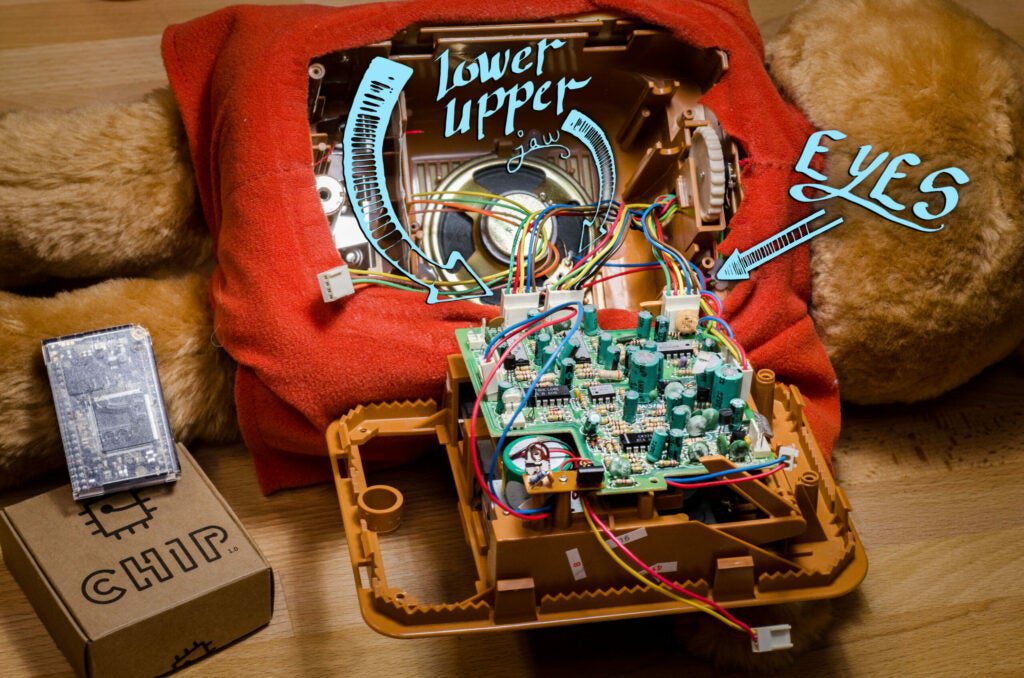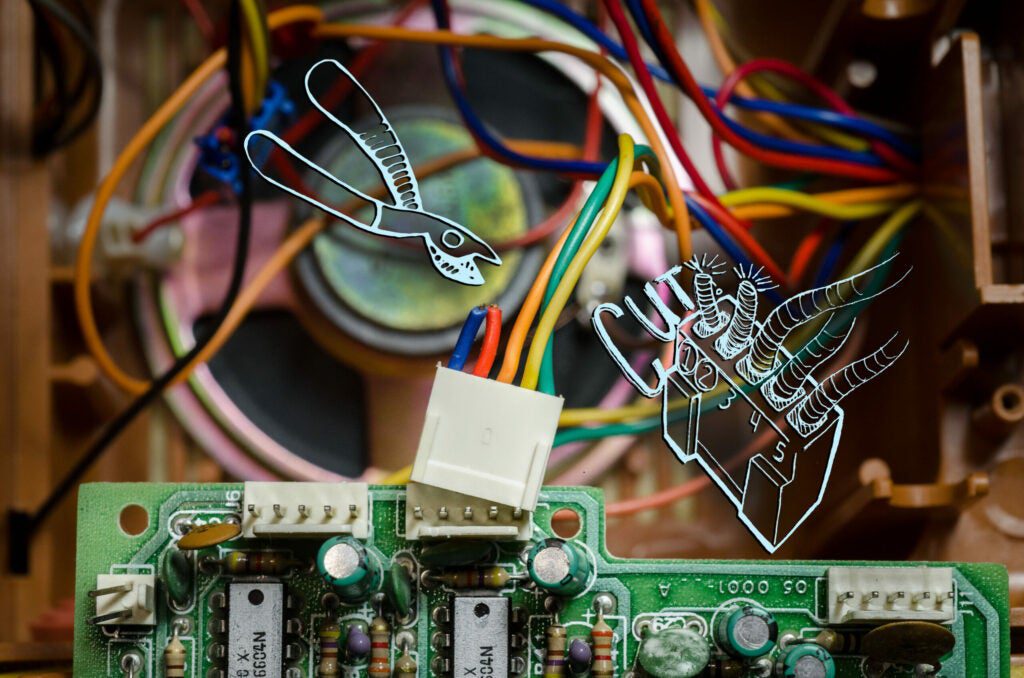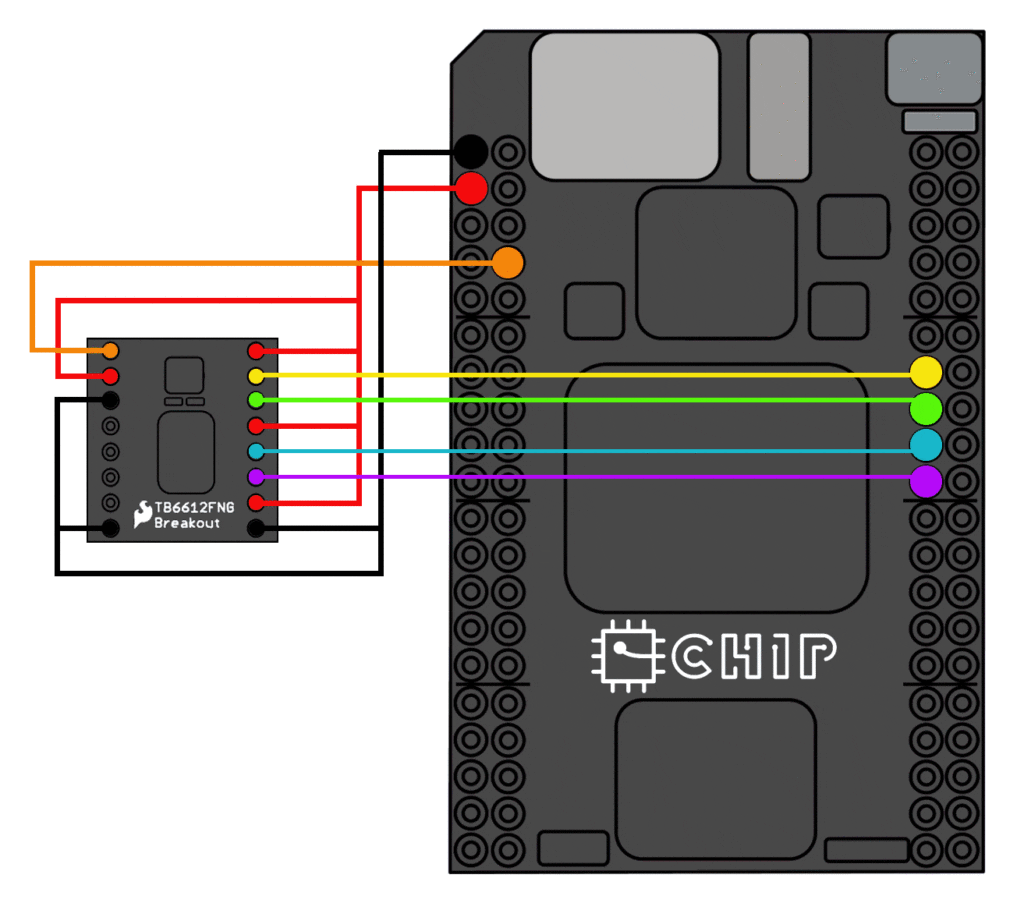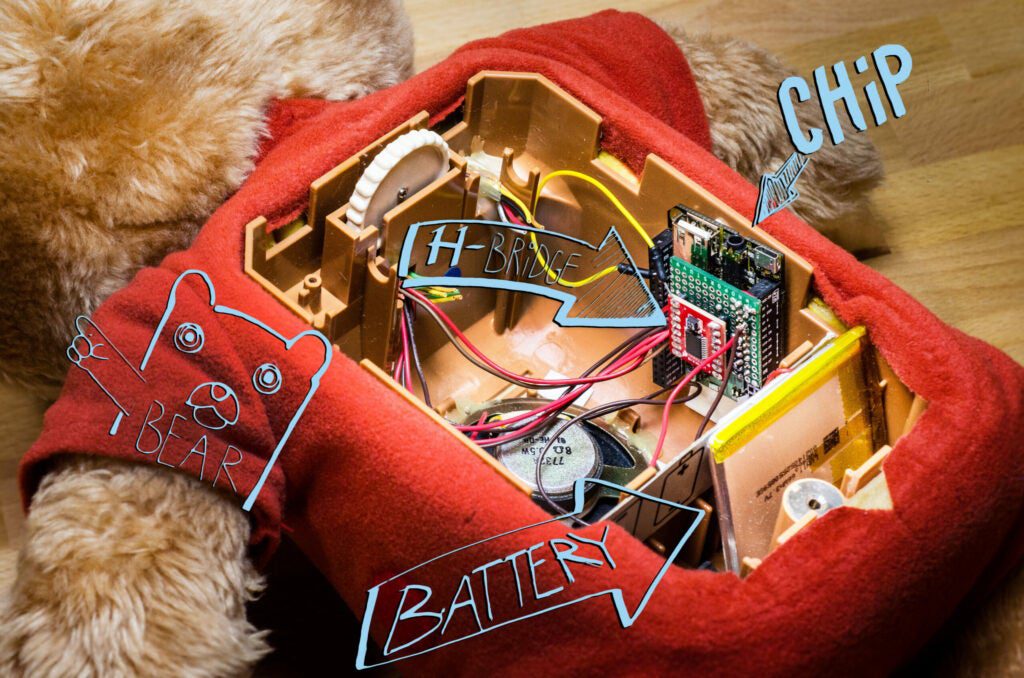In the 1980s, a talking teddy bear called Teddy Ruxpin took the world by storm. Now, Oakland engineer Andrew Langley is bringing Teddy back. He hacked the bear’s circuitry and installed C.H.I.P., the $9 computer that his company, Next Thing, had just crowd-funded. The 1-GHz computer can run text-to-voice algorithms that let the bear read anything.
Stats
- Time: 3 hours
- Cost: About $85
- Difficulty: Medium
Tools + Materials
- Teddy Ruxpin (make sure the jaw and eye motors still work)
- Screwdriver
- Wirecutters
- Soldering iron
- C.H.I.P. computer
- SparkFun Motor Driver, Dual TB6612FNG
- 3.5 mm audio cable
- 3.7-volt single-cell Li-po battery
Instructions
Step 1
Purchase a working Teddy Ruxpin from eBay, and pop open its back with the screwdriver. Inside, identify three sets of motor connectors for the eyes, upper jaw, and lower jaw.
Step 2
To sync the upper and lower jaws, wire them together: Clip the first two wires on the upper and lower jaw connectors, and solder together the “jaw open” and the “jaw closed” wires.
Step 3
An H-bridge circuit will let the C.H.I.P. control Teddy’s motors. Follow this wiring diagram to connect the C.H.I.P. to the motor driver. Then, to create the H-bridge, connect the bear’s AIN1 pin to C.H.I.P.’s XIO-P0 pin, AIN2 to XIO-P2, BIN1 to XIO-4, and BIN2 to XIO-6. Finally, connect the motor driver’s A01 and A02 pins to the soldered wires controlling Teddy’s upper and lower jaw motors. Link B01 and B02 to the eye motors.
Step 4
Cut the audio output wires that connect Teddy to his onboard speaker, and rewire them to C.H.I.P.’s audio cable. Plug the cable and the battery into the C.H.I.P.
Step 5
Follow C.H.I.P.’s directions to boot up and log onto the Internet. Then download Langley’s software from Github. The package includes an audio player, a Web interface, a Twitter library, and a class to control those GPIO pins on C.H.I.P. that will move the motors. Launch the interface, and give Teddy something to say.
This article was originally published in the May/June 2016 issue of Popular Science, under the title “Hack a Teddy Bear to Say Anything.”














